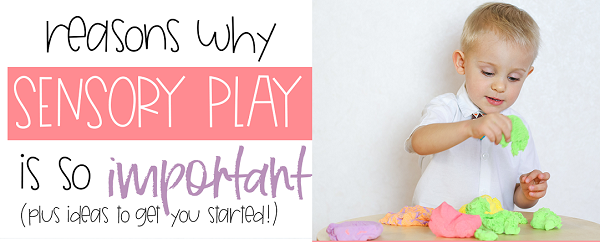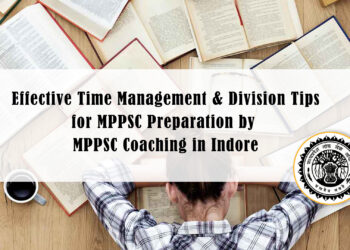Children are by nature scientists, investigators, and explorers with all the materials they find in the environment. In the past, children had to go outside to play, they collected sticks, stones, and flowers to tidy up and count.
How many times, as a child, have you observed a caterpillar on the ground, following it closely to see where it was going? How many times have you cycled around the block and played hide and seek outside with friends until they called you in for dinner?
Such experiences have played a major role in developing our senses and have taught us how to self-regulate our actions, further helping us prepare to receive a more formal education later in school.
Today, many children are forced to play at home or indoors, video games, television and computers are the main activities of indoor play.
While these activities provide visual and auditory stimulation, they are too fast-paced and do not allow the child to self-regulate. At the same time, parents and teachers are under increasing pressure to “prepare” children for school. Unfortunately, this causes too young children to have to do tasks and other activities not appropriate for their age.
Playing video games, watching television, or doing homework at the desk prevents the child from using all of their senses to explore, discover and learn from their surroundings.
The Importance Of Sensory Play
Why is sensory play important? What factors influence the sensory development of young children? What role do sensory activities play in adding value to a child’s overall growth and development?
Sensory play involves all such activities that encourage the children to explore their environment through materials that help in stimulating their senses. These activities range from yoga to dance, from sand manipulation games to finger paints. Adults are often hesitant to offer children the opportunity to participate in sensory play as this type of play can be cluttered and noisy, or could lead to disruptive behavior. However, with a few simple rules, a carefully prepared environment, and sufficient time, the benefits of sensory play for a child are invaluable.
Read More: Virtual Reality: The Next Big Thing in Educational Technology
Sensory play helps in improving the way a child reacts and responds to the external environment through different sensory perceptions that include visual, auditory, kinesthetic, olfactory, and gustatory perceptions. Young children have a physical and emotional desire to see, hear, touch, smell, and taste things that are within their reach and new to them. Preschools and Pre-K classrooms require exposure to activities that stimulate all of these senses. As a child grows, the need to explore materials in their world continues. Sensory exploration is a way to improve cognitive, social, emotional, and behavioral development among young children.
Promote Sensory Play In Enclosed Spaces
Open spaces support the child’s natural sensory development. This type of activity should be encouraged as much as possible. However, when weather or other conditions inhibit outdoor play, opportunities for exploration should also be promoted indoors. This will require more creativity and preparation on the part of the adult. Many elements of nature such as pine cones, flowers, or stones can be moved inside for discovery and play. The sensory table can be used for water and sand games, along with other natural materials such as snow, earth, bark, leaves, or pine needles (hint: if you don’t have a sensory table, a bathtub is fine too).
Read More: How this pandemic will affect Indian Education System
Artistic activities can also foster sensory exploration. Finger paints, for example, are a useful tool to simulate different senses, such as touch and smell. It is just as fun to spread paint all over your hands as it is to spread it on paper! For an adult, however, the activity appears chaotic and the immediate reaction may be to ask the child to wash his/her hands. As soon as an adult intervenes in this way, the sensory learning connection is abruptly broken. Instead, it would be much more valuable for the adult to discuss how the paint looks on paper and how it feels between the fingers.
Sensory Play With Domestic Materials
Exploration in enclosed spaces can include various sensory activities. Adults can devise activities that satisfy the child’s sensory needs using common household materials. For example, the following simple activities promote sensory development and can be easily arranged by parents or teachers.
View
- Paint with water on tissue paper using a dropper to stimulate motor skills.
- Mix the baking soda with the gelatin, then slowly pour in the vinegar for a visual blast.
- Scribble on aluminum foil using colored markers.
Hearing
- Create a variety of sound effects using wooden pots, pans, and utensils.
- Read a known book leaving omitting the last word of a sentence and asking the children to complete it.
Kinesthetics
- Try drawing with your feet. Put the paper on the floor and take off the baby’s shoes and socks.
- Practice the positions of yoga: the tree, the star, the frog, and the flower.
- Build an indoor obstacle course using pillows, blankets, and hoops.
- Imitate the movements of animals and ask the children to emulate them.
Smell
- Create a smelling laboratory using the spices of the kitchen
- Play “Guess the Scent” using a variety of lotions, such as sunscreen, hand soap, dish soap, toothpaste.
Taste (watch out for allergies!)
- Savor and compare sweet and savory food products, such as chocolate cream and pizza.
- Play “Guess the flavor” by using different ice cream flavors.
- Provide The Right Time
Finally, remember that exploring takes time. If a child needs to connect with their environment, they will need time to explore, discover and use all of their senses. When sense discovery is encouraged, children’s rebellious behaviors naturally fade away. Children learn to self-regulate, communicate their ideas and are ready to absorb new information. Above all, children will find joy and enthusiasm for learning and this will lead them throughout their lives.











